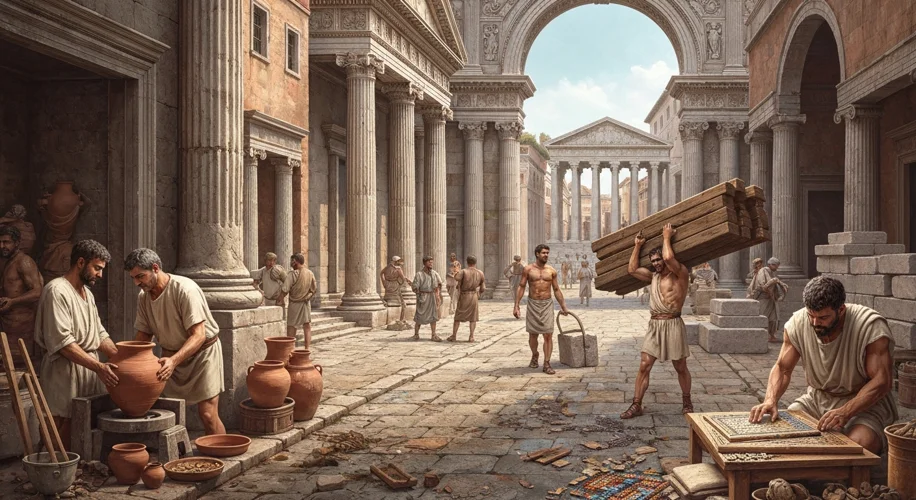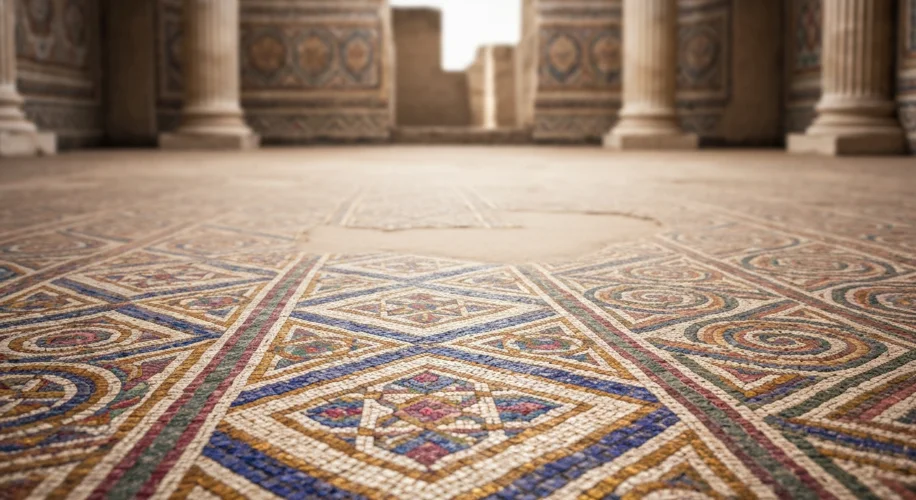When we picture ancient Rome, our minds often conjure images of marble statues, majestic temples, and aqueducts stretching across the horizon. We see emperors in their togas, senators debating in the Forum, and legions marching to conquer distant lands. But behind these grand narratives, the true architects of Rome’s enduring legacy were the countless artisans and laborers who toiled with their hands, shaping the very fabric of this immense empire.
These were not the names etched in history books, but their sweat and skill are imprinted on every enduring structure and every piece of exquisite art that has survived the millennia. Their lives were a world away from the opulence of the elite, a daily struggle for survival punctuated by immense pride in their craft.
Imagine a stonemason, his hands calloused and rough, meticulously chipping away at a block of travertine. The midday sun beats down on the construction site of the Colosseum, the air thick with dust and the din of hammers. He’s not just cutting stone; he’s part of a massive undertaking, a collective effort that will create a monument to Roman entertainment and engineering. His pay is meager, perhaps a few denarii a day, enough to put bread and olives on the table for his family. Yet, as he fits another perfectly carved piece into place, there’s a satisfaction that transcends the fatigue. He is building Rome, layer by layer, enduring stone by enduring stone.

Consider the potter, his workshop filled with the earthy smell of clay. His days are spent at the wheel, his fingers dancing with a mesmerizing rhythm, coaxing simple lumps of earth into elegant amphorae for wine and oil, sturdy bowls for everyday meals, or delicate terra sigillata ware, a fine red-gloss pottery prized for its decorative qualities. The demand is constant. Every household, every tavern, every shipment across the Mediterranean needs his wares. His success is measured in the volume he can produce and the quality that keeps customers returning. A broken amphora isn’t just a failed piece; it’s lost income, a setback in a precarious livelihood.
The mosaicist, too, was a craftsman of immense skill and patience. Hunched over intricate designs, he would painstakingly place tiny tesserae – cut pieces of marble, glass, or stone – to create vibrant scenes of mythology, geometric patterns, or depictions of daily life. These weren’t just decorative floors; they were testaments to the owner’s wealth and taste, transforming ordinary villas into miniature palaces. The mosaicist worked with a palette of a thousand colors, his reward the enduring beauty he brought to life, one tiny stone at a time.
And what of the humble laborer? The ones who hauled the heavy stones, mixed the mortar, dug the foundations, and cleared the debris? Their lives were perhaps the most physically demanding, their contribution often unseen but utterly essential. They formed the backbone of every major construction project, their strength and endurance enabling the ambitious designs of architects and engineers. Their existence was often transient, moving from site to site, seeking work wherever the empire’s insatiable appetite for building created opportunities.
Life for these individuals was precarious. Guilds, or collegia, offered some form of community and mutual support, pooling resources for funerals and aiding the families of members. These associations, from stonemasons to bakers, provided a sense of belonging and a rudimentary social safety net in a world without formal welfare. Yet, disease, injury, and economic downturns could quickly plunge a family into destitution.

The legacy of these forgotten workers is profound. The Pantheon’s dome, a marvel of engineering that still astounds us, was built with concrete poured by countless hands. The intricate frescoes in Pompeii, preserving moments of Roman life, were painted by skilled artists. The roads that crisscrossed the empire, facilitating trade and troop movement, were laid by armies of laborers. Even the simple pottery shards found in archaeological digs tell stories of daily life, of meals shared, of goods transported.
Their story is a crucial reminder that history is not just made by the powerful, but by the collective effort of ordinary people. The artisans and laborers of Rome, though largely anonymous, were the indispensable creators who built, decorated, and sustained an empire whose influence resonates to this day. Their enduring works are a testament to their skill, their resilience, and their vital, often overlooked, role in shaping the world we inhabit.


